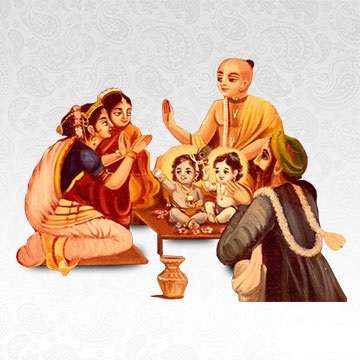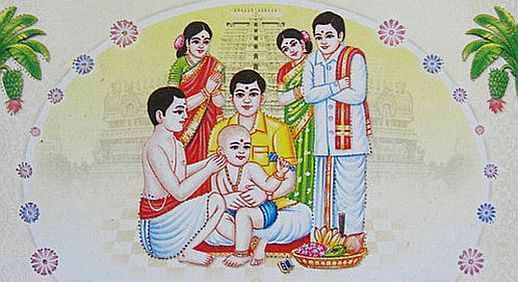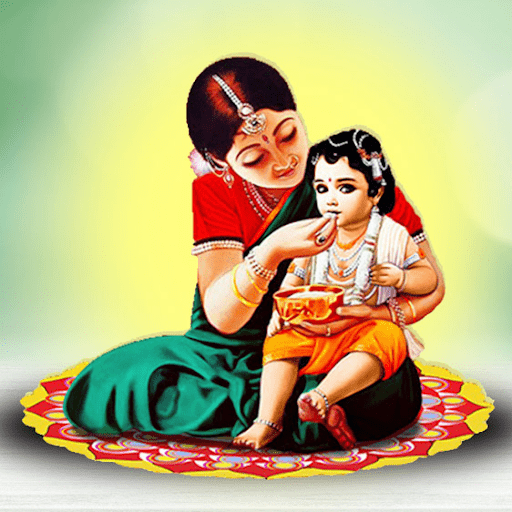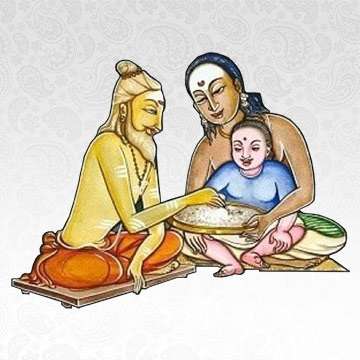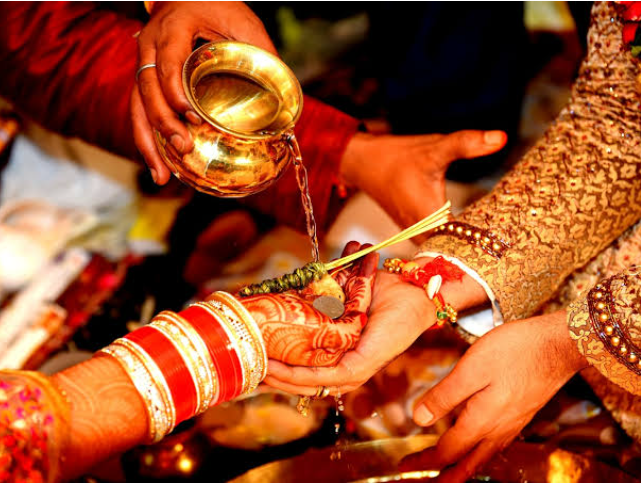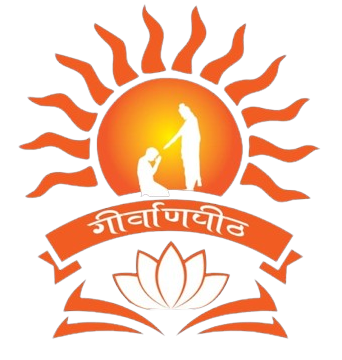#Welcome Geervaanpeeth
Naamakaranam: Bestowing an Auspicious Name
Naamakaranam involves assigning a name to a newborn based on Rasi and nakshatra or selecting a suitable name per Sastras for Lord's blessings. The ritual includes Punyahavachanam and Jathakarmam. Traditionally performed on the 11th day of the baby’s birth, it is auspicious when conducted in the morning.
Benefits
- Establishes an official Hindu name for identification and Sankalp purposes.
- Seeks permission from the Supreme Lord for the child's name.
- Infuses positive energy into the name for the child's lifetime.
